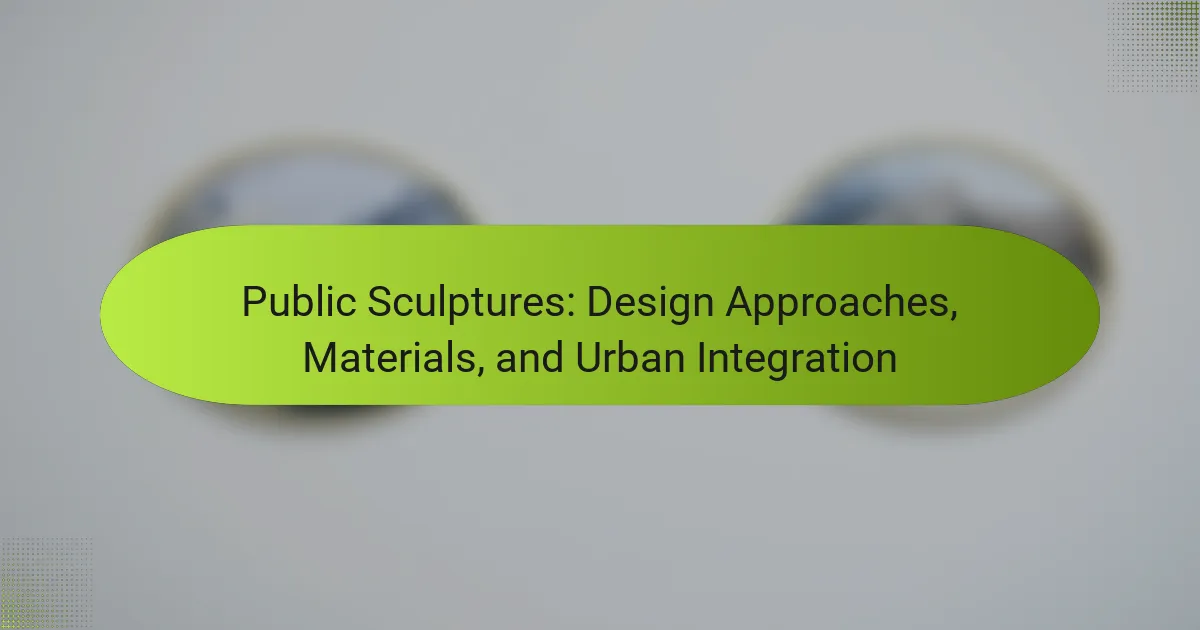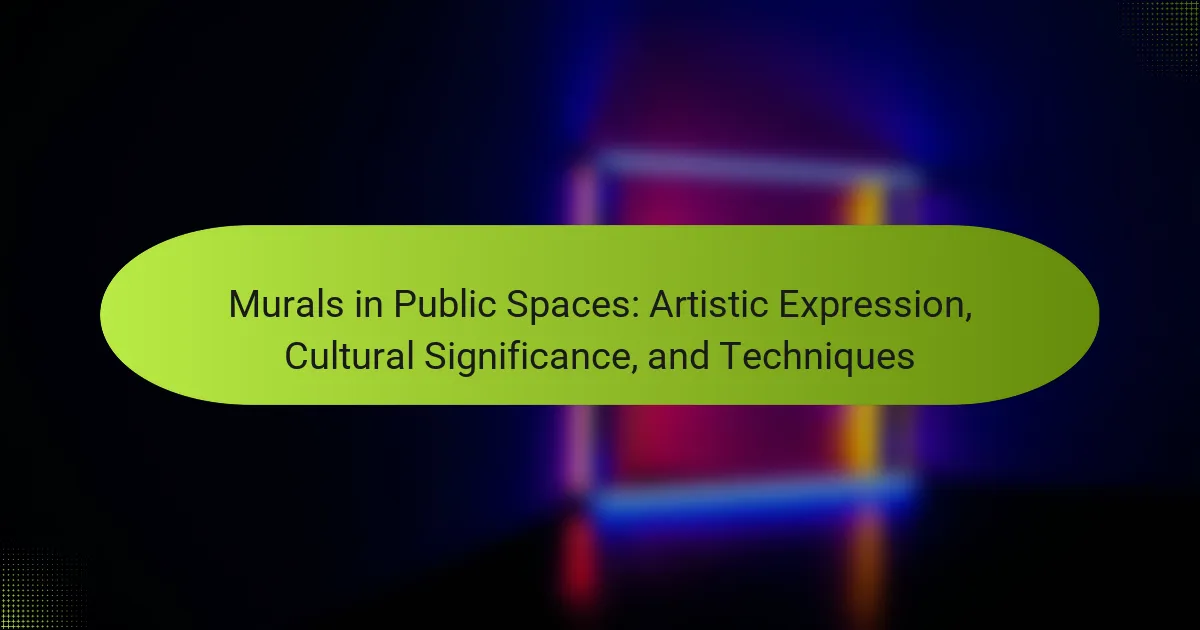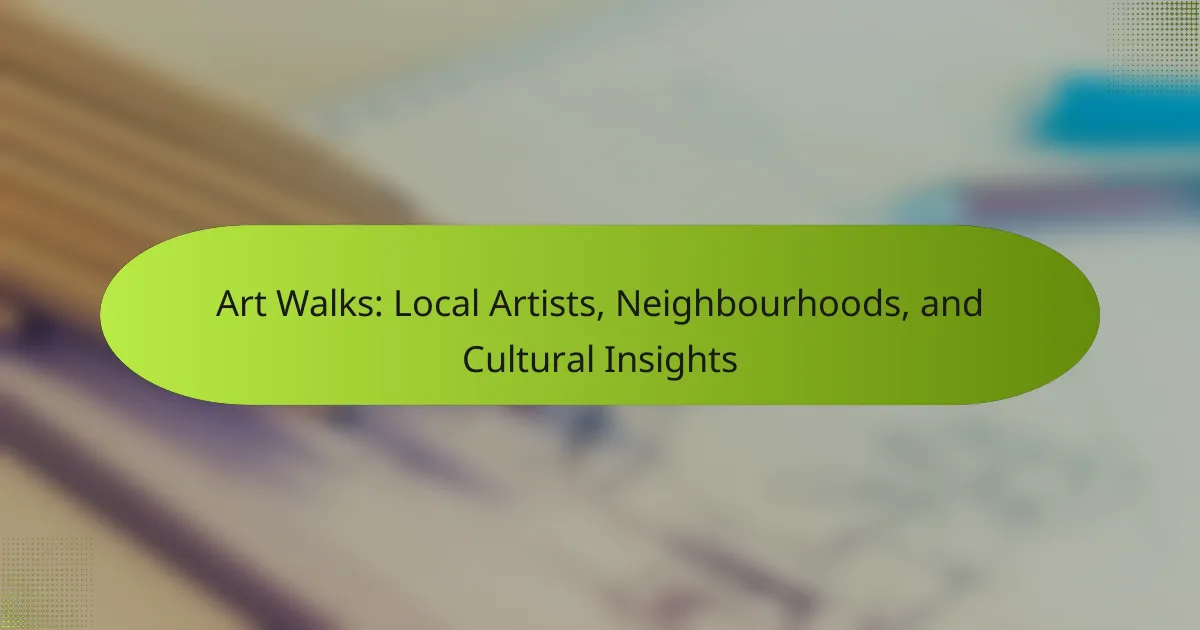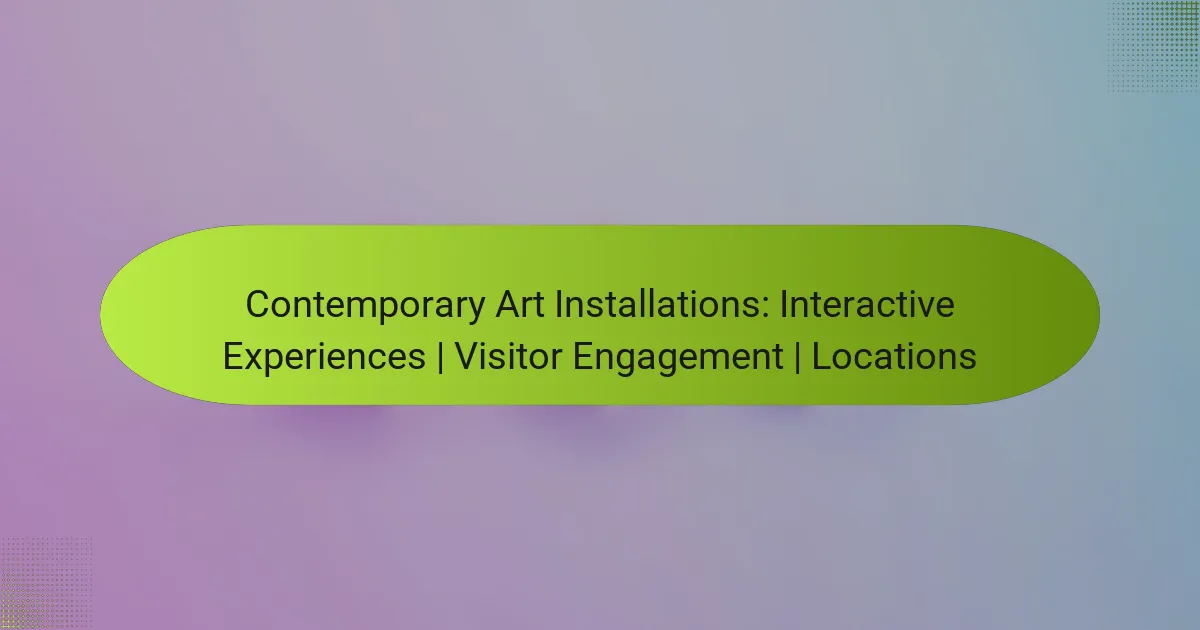Urban art collectives enhance community identity through collaboration and creative expression. They influence local cultures by transforming public spaces and addressing social issues. Notable projects like the Bushwick Collective and Wynwood Walls exemplify their impact. Additionally, the integration of technology and a focus on sustainability shape their future initiatives.
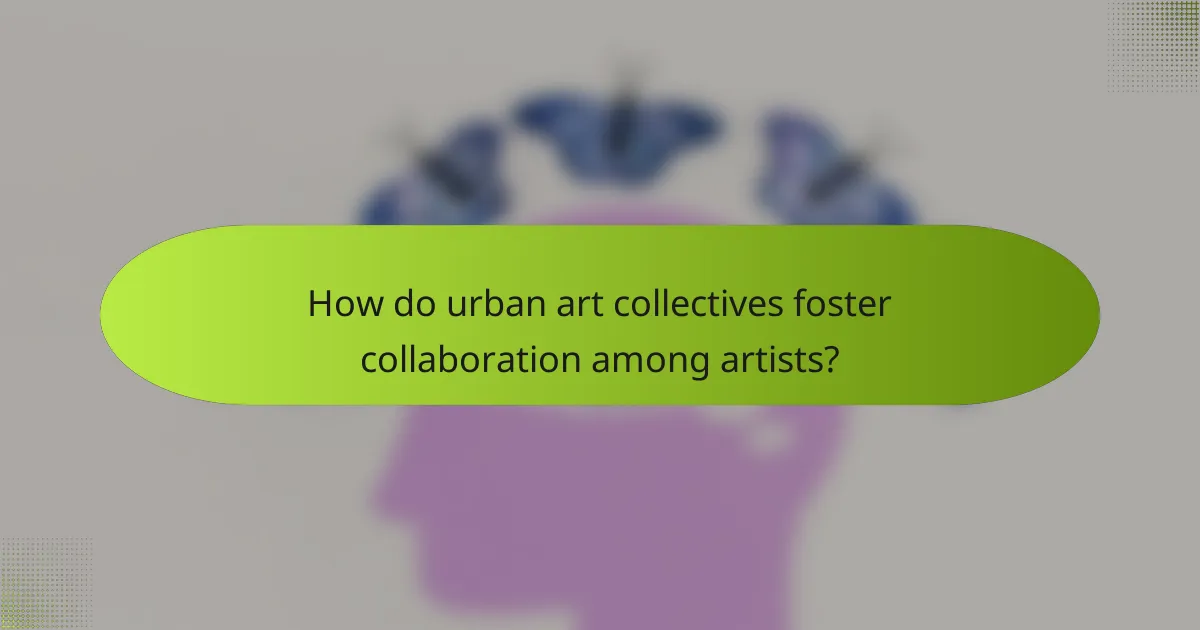
How do urban art collectives foster collaboration among artists?
Urban art collectives foster collaboration among artists by creating supportive environments that encourage creativity and shared resources. They often facilitate networking opportunities, enabling artists to connect and exchange ideas. Collaborative projects, such as murals or installations, promote teamwork and collective identity. Additionally, urban art collectives often provide access to funding, spaces, and materials, which can enhance artistic production. This collaborative framework not only enriches individual artists but also strengthens community ties through shared cultural expressions.
What are the key benefits of collaboration in urban art collectives?
Collaboration in urban art collectives enhances creativity, fosters community engagement, and amplifies social messages. It allows artists to share resources and skills, leading to innovative projects. For example, joint murals can address local issues, attracting attention and dialogue. This synergy creates a vibrant cultural landscape, enriching urban environments.
Which collaborative processes are most effective in urban art projects?
Collaborative processes that foster effective urban art projects include community engagement, interdisciplinary teamwork, and participatory design. These approaches enhance creativity and ensure that the art reflects local culture. Community engagement builds trust and gathers diverse perspectives, while interdisciplinary teamwork brings together artists, architects, and local stakeholders. Participatory design actively involves the community in decision-making, leading to projects that resonate deeply with the audience. Notable examples include the “Mural Arts Program” in Philadelphia, which emphasizes collaboration with residents to transform public spaces.
How do urban art collectives manage creative differences among members?
Urban art collectives manage creative differences through open communication, collaborative decision-making, and structured conflict resolution. These strategies foster a supportive environment, allowing diverse artistic visions to coexist. Regular meetings and feedback sessions help address issues early, promoting unity and shared goals. Additionally, establishing clear roles and responsibilities ensures that all members feel valued and heard, enhancing overall creativity.
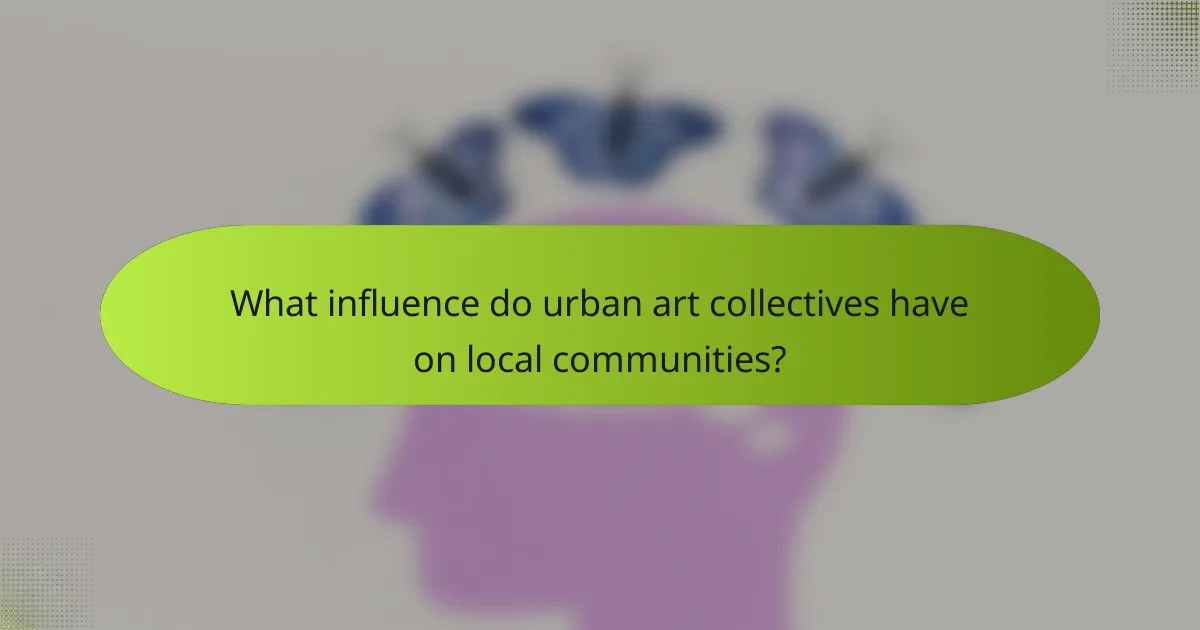
What influence do urban art collectives have on local communities?
Urban art collectives significantly influence local communities by fostering collaboration, creativity, and social engagement. They often transform public spaces, enhance community identity, and address social issues through artistic expression. Notable projects include murals that reflect local history and promote dialogue among residents. These initiatives can increase community pride and attract tourism, ultimately benefiting local economies.
How do urban art collectives contribute to community identity and pride?
Urban art collectives significantly enhance community identity and pride through collaborative projects that reflect local culture. These collectives engage residents in creating public art, fostering a sense of ownership and belonging. Notable projects often symbolize shared values, history, and aspirations, reinforcing community bonds. For instance, murals can transform neglected spaces into vibrant landmarks that celebrate local heritage. As a result, urban art collectives not only beautify neighborhoods but also empower residents to express their unique identities.
In what ways do urban art collectives engage with social issues?
Urban art collectives engage with social issues by creating awareness, fostering community dialogue, and advocating for change. They often address topics like inequality, environmental concerns, and cultural identity through collaborative projects. These collectives use public spaces as platforms for expression, transforming urban environments into sites of social commentary. Notable projects include murals that highlight local struggles, installations that provoke thought, and events that encourage community participation. Through these efforts, urban art collectives not only beautify neighborhoods but also inspire action and reflection on pressing social issues.
Which notable urban art collectives have made significant impacts in their communities?
Notable urban art collectives that have made significant impacts include the Guerrilla Girls, who advocate for gender equality in the arts, and the Wynwood Walls Collective, which transformed a neighborhood in Miami into a vibrant art district. The Bushwick Collective in Brooklyn fosters community through street art, while the Detroit Beautification Project revitalizes abandoned spaces. Each collective uses art to address social issues and engage local residents.
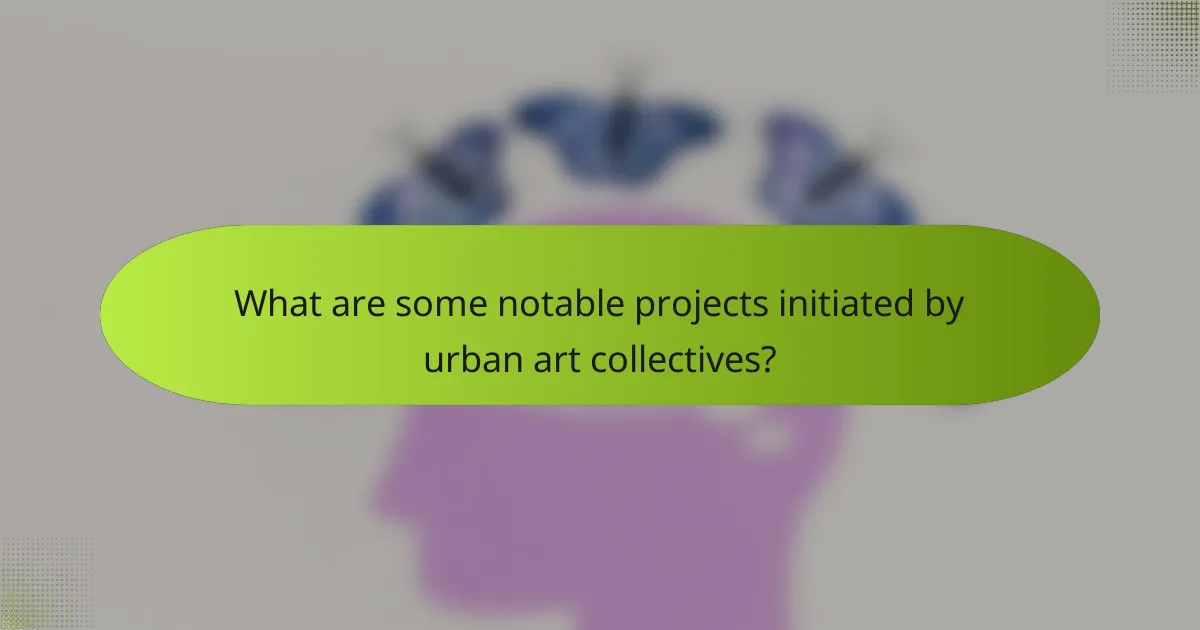
What are some notable projects initiated by urban art collectives?
Urban art collectives have initiated numerous impactful projects that enhance community engagement and urban aesthetics. Notable examples include:
1. The Mural Project by the Bushwick Collective in Brooklyn, New York, which transformed walls into vibrant canvases.
2. The Wynwood Walls in Miami, showcasing large-scale murals by international artists, revitalizing the neighborhood.
3. The Street Art Festival in Bristol, England, promoting local talent and attracting global artists.
4. The Art of the Streets project in San Francisco, blending art with social messages to address community issues.
5. The Power of the Paintbrush initiative in Toronto, focusing on mental health awareness through public murals.
These projects illustrate how urban art collectives leverage collaboration to influence public spaces positively.
Which projects exemplify successful collaboration in urban art?
Successful collaboration in urban art is exemplified by projects like the Mural Arts Program in Philadelphia, the Wynwood Walls in Miami, and the 1×1 Project in Berlin. These initiatives showcase diverse artists working together to enhance community engagement and transform urban spaces.
The Mural Arts Program has created over 4,000 murals, emphasizing social change through art. Wynwood Walls features large-scale murals from international artists, drawing millions of visitors annually. The 1×1 Project promotes dialogue by pairing local and international artists, fostering cultural exchange.
These projects highlight urban art’s role in community identity and social cohesion. They demonstrate how collaboration can create impactful visual narratives that resonate with diverse audiences.
How do urban art collectives utilize public spaces for artistic expression?
Urban art collectives actively transform public spaces into vibrant canvases for artistic expression. They engage communities, promote cultural dialogue, and challenge societal norms through collaborative projects. Notable examples include murals, installations, and street performances that reflect local identities and issues. By utilizing urban environments, these collectives foster a sense of belonging and encourage public interaction with art.
What challenges do urban art collectives face in executing large-scale projects?
Urban art collectives face significant challenges in executing large-scale projects, including funding, community engagement, and regulatory hurdles. Securing financial resources remains a primary obstacle, as many collectives rely on grants or donations. Additionally, fostering collaboration among diverse artists can complicate project execution. Engaging local communities is crucial but often difficult, as differing opinions can lead to conflicts. Regulatory challenges, such as permits and zoning laws, can also hinder progress. These factors collectively impact the success and sustainability of urban art initiatives.
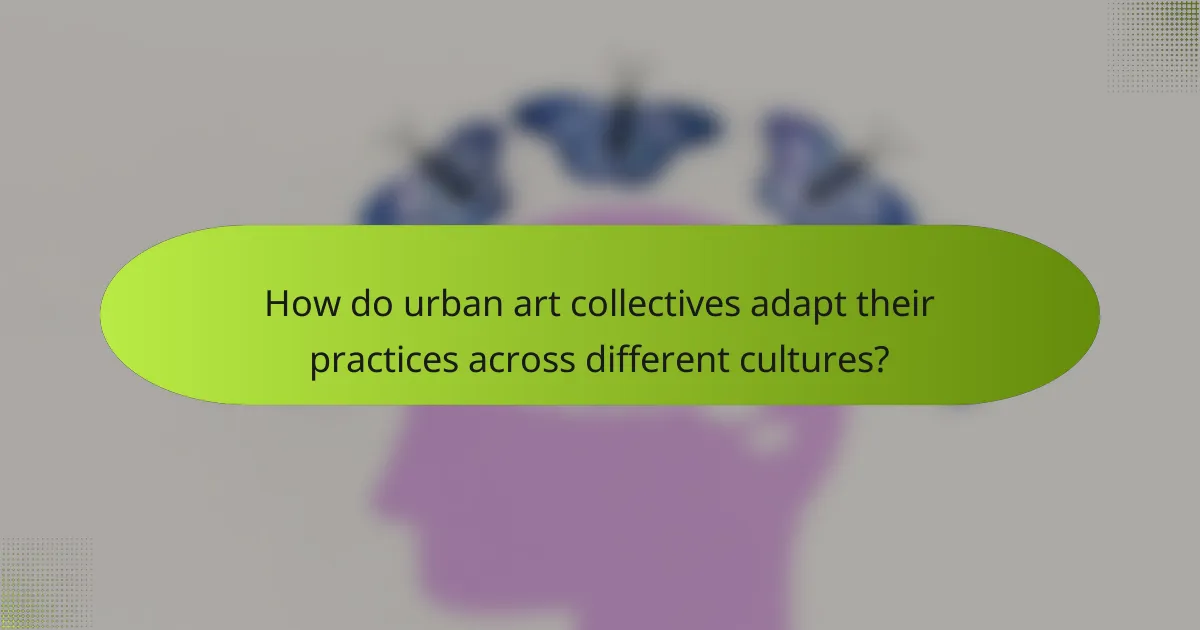
How do urban art collectives adapt their practices across different cultures?
Urban art collectives adapt their practices by integrating local cultural elements and collaborating with community artists. They often reflect the social issues and narratives specific to each culture, enhancing their relevance and impact. For instance, collectives in Latin America may focus on themes of social justice, while those in Europe might address urbanization and identity. This adaptability fosters a unique dialogue between the collective and the local environment, ensuring that their art resonates deeply with diverse audiences.
What are the cultural influences on urban art collective practices in various regions?
Cultural influences on urban art collective practices vary significantly across regions. Local traditions, social movements, and community needs shape the artistic expressions and collaborative efforts of these collectives.
For instance, in Latin America, urban art often reflects social justice themes, influenced by historical struggles. In contrast, European collectives may emphasize aesthetic innovation and cultural critique, drawing from diverse artistic traditions.
Additionally, the digital age has fostered global collaboration, allowing artists from different regions to share techniques and ideas. This exchange enriches local practices while maintaining unique regional identities.
Overall, urban art collectives thrive on the interplay between local culture and global influences, creating dynamic and evolving art scenes.
How do urban art collectives navigate legal and regulatory challenges in different locales?
Urban art collectives navigate legal and regulatory challenges through strategic collaboration and community engagement. They often build relationships with local authorities to secure permissions and support.
In cities with strict regulations, collectives may focus on temporary installations or community projects that emphasize social impact. This approach helps mitigate legal risks while fostering positive community relations.
Notable projects often showcase innovative solutions to regulatory hurdles, such as murals created in partnership with local businesses. These initiatives can enhance public spaces and promote cultural dialogue.
By adapting to local legal landscapes, urban art collectives can thrive, influencing public perception and policy regarding street art.

What role do technology and social media play in urban art collectives?
Technology and social media significantly enhance urban art collectives by facilitating collaboration and expanding their reach. Digital platforms allow artists to share their work instantly, attracting broader audiences and fostering community engagement. Social media also serves as a tool for organizing events, promoting projects, and connecting with other artists. Notable projects often gain traction through viral campaigns, showcasing the collective’s influence on urban culture. The integration of technology has transformed traditional art practices, enabling innovative expressions and collaborations that reflect contemporary societal issues.
How do urban art collectives use social media for promotion and engagement?
Urban art collectives leverage social media to enhance visibility and foster community engagement. They utilize platforms like Instagram and Facebook to showcase their projects, share behind-the-scenes content, and connect with followers. This approach amplifies their reach and attracts collaboration opportunities. Engaging with audiences through interactive posts and live events cultivates a sense of belonging among art enthusiasts. Notable projects often gain traction through viral social media campaigns, demonstrating the power of digital platforms in urban art promotion.
What technological tools enhance collaboration within urban art collectives?
Technological tools that enhance collaboration within urban art collectives include project management software, social media platforms, and digital design tools. These resources facilitate communication, streamline project workflows, and enable collective brainstorming. For example, platforms like Slack allow real-time discussions, while tools like Trello help organize tasks efficiently. Additionally, digital design software such as Adobe Creative Cloud fosters collaborative creativity by allowing multiple artists to contribute to projects simultaneously. These technologies improve overall productivity and engagement in urban art initiatives.
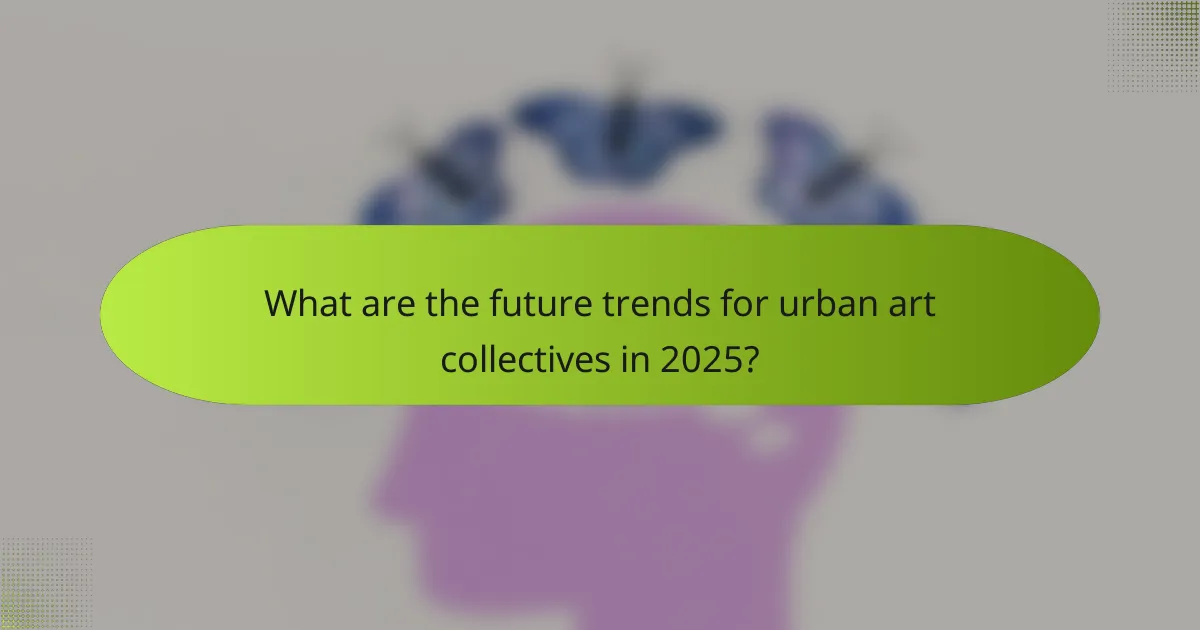
What are the future trends for urban art collectives in 2025?
Urban art collectives will increasingly focus on sustainability, digital integration, and community engagement by 2025. Collaborations with technology firms will enhance interactive art experiences, while eco-friendly practices will define new projects. Notable initiatives will likely emerge from diverse urban areas, reflecting local culture and social issues. These trends will solidify the role of urban art as a powerful medium for social change and community identity.
How are urban art collectives evolving in response to societal changes?
Urban art collectives are adapting by embracing social themes and community engagement. They respond to societal changes through collaborative projects that address issues like inequality and environmental concerns. Notable initiatives include murals that raise awareness on social justice, reflecting the collective’s commitment to activism. Additionally, these collectives utilize digital platforms to expand their reach and influence, showcasing art that resonates with contemporary audiences. This evolution highlights their role as catalysts for social change in urban environments.
What innovations are emerging in urban art practices?
Urban art practices are increasingly characterized by collaborative efforts among collectives, leading to innovative projects that reshape urban spaces. These collectives often blend diverse artistic styles and cultural influences, creating dynamic public artworks. Notable projects include large-scale murals that address social issues, interactive installations that engage communities, and events that foster artistic exchange. Emerging technologies, such as augmented reality, are also being integrated into urban art, enhancing viewer interaction and experience.
What best practices can urban art collectives adopt for sustained success?
Urban art collectives can achieve sustained success by fostering collaboration, engaging with communities, and adapting to changing trends. Prioritize open communication among members to enhance creativity and cohesion. Establish partnerships with local businesses and organizations to gain support and resources. Regularly showcase projects in public spaces to increase visibility and influence. Encourage diverse artistic expressions to attract a broader audience and maintain relevance.
